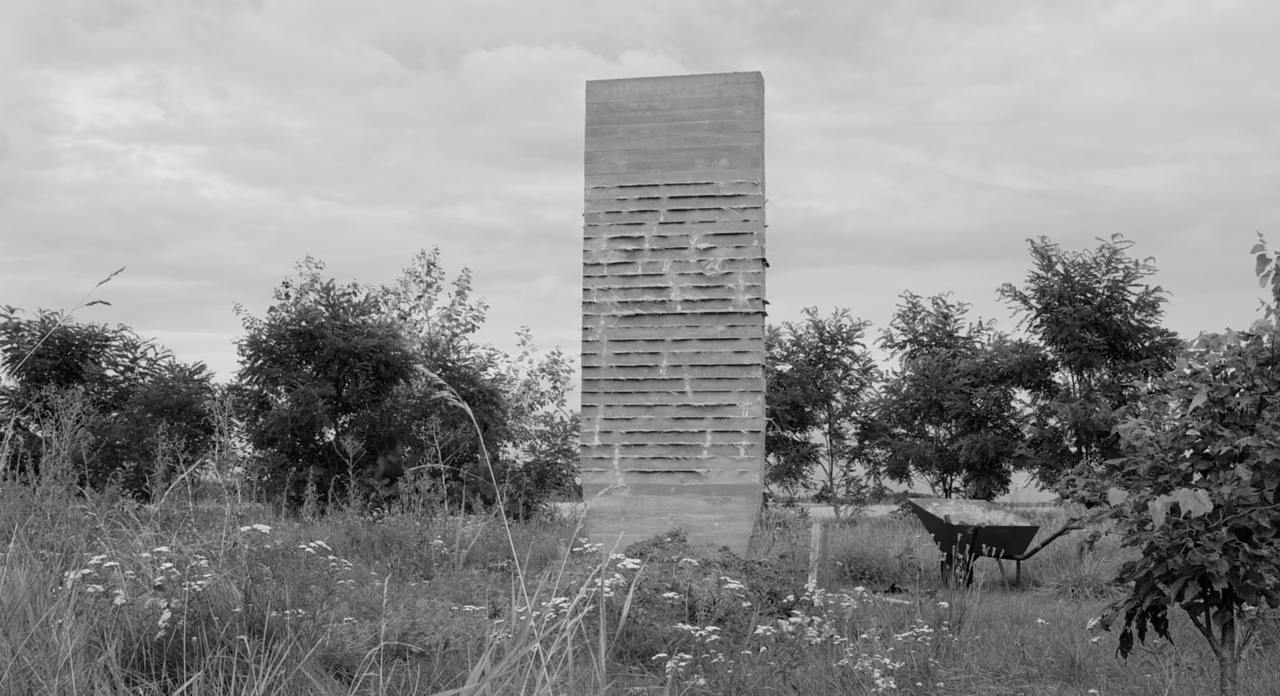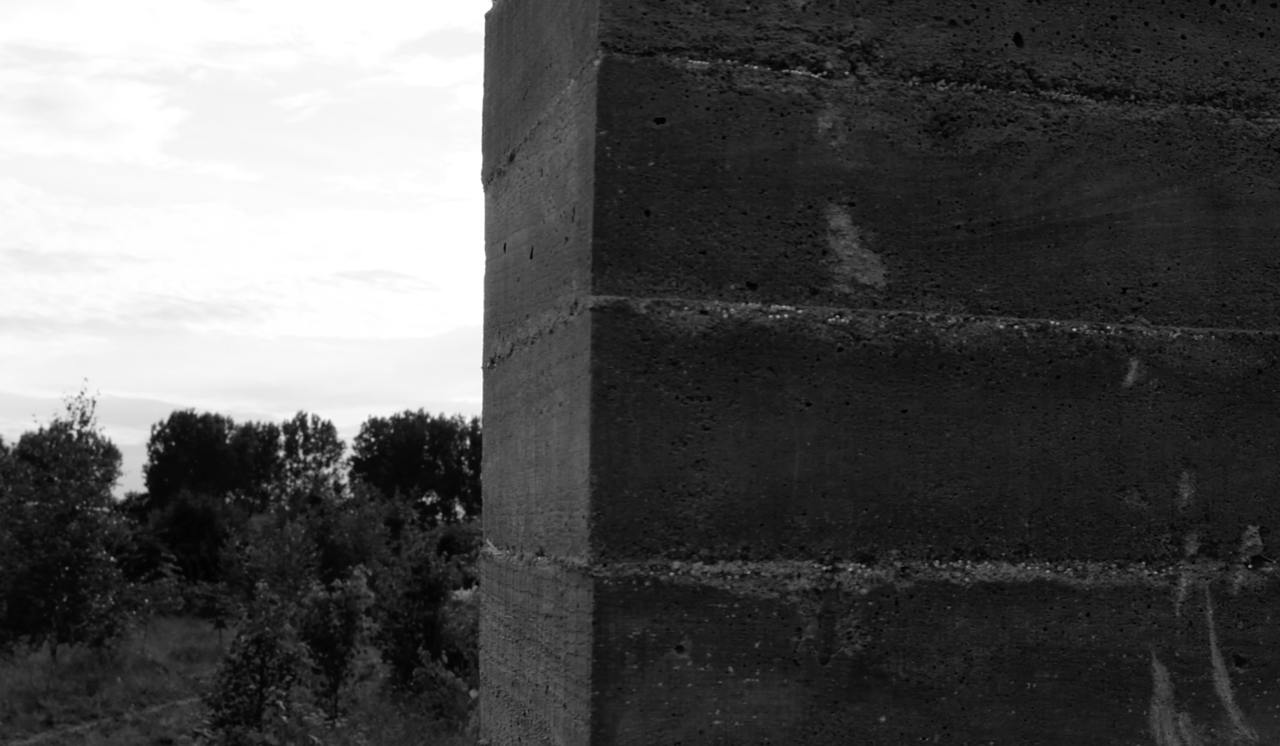Ruń
2024
Sculpture, site-specific.
~340x100x10 cm, concrete, fiber optics.
Ruń is an over three-meter-tall concrete sculpture
installed in the village of Mochnate in the Podlasie region (Polish-Belarusian border). It embodies the metaphor of "ruń" (from Belarusian: young grass) — fresh growth emerging through new soil, symbolizing cultural adaptation and transformation.
Podlasie is a region where historical narratives and traditions intersect, making it a kind of cultural borderland. The location for the sculpture was chosen with this layered context in mind — a place where historical memory is not strictly shaped by a singular state policy but is often defined by collective and personal remembrance. Concrete is traditionally associated with monumentality and official memory, but in this project, it takes on a different meaning. Ruń is not a conventional monument capturing a particular story or a specific figure. Instead, it remains abstract and undefined, representing memory that is not institutionalized yet continues to exist within the cultural landscape from which the sculpture emerges. Fiber optic strands integrated into the sculpture allow the concrete to sparkle in sunlight, at dawn, and at sunset, making the piece subtly responsive to its surroundings.
Ruń is an attempt to capture unofficial or suppressed memory, reminding us that any space carries multiple, often invisible contexts. It may be the experience of families whose identity does not fit into state frameworks, migration stories that blur the boundaries of national belonging, or a sense of connection to a place shaped not by official toponyms and memorials, but by individual experience. The sculpture, as a "monument to nothing," acts as a marker of a space where official memory is absent or deliberately left undefined.
Podlasie is a region where historical narratives and traditions intersect, making it a kind of cultural borderland. The location for the sculpture was chosen with this layered context in mind — a place where historical memory is not strictly shaped by a singular state policy but is often defined by collective and personal remembrance. Concrete is traditionally associated with monumentality and official memory, but in this project, it takes on a different meaning. Ruń is not a conventional monument capturing a particular story or a specific figure. Instead, it remains abstract and undefined, representing memory that is not institutionalized yet continues to exist within the cultural landscape from which the sculpture emerges. Fiber optic strands integrated into the sculpture allow the concrete to sparkle in sunlight, at dawn, and at sunset, making the piece subtly responsive to its surroundings.
Ruń is an attempt to capture unofficial or suppressed memory, reminding us that any space carries multiple, often invisible contexts. It may be the experience of families whose identity does not fit into state frameworks, migration stories that blur the boundaries of national belonging, or a sense of connection to a place shaped not by official toponyms and memorials, but by individual experience. The sculpture, as a "monument to nothing," acts as a marker of a space where official memory is absent or deliberately left undefined.







